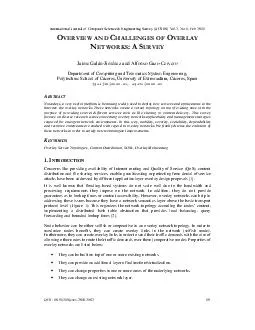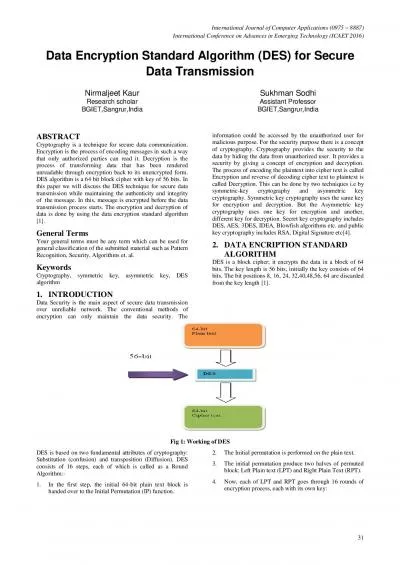PDF-International Journal of Computer Science & Engineering Survey (IJCSES
Author : stefany-barnette | Published Date : 2015-09-17
International Journal of Computer Science Engineering Survey IJCSES Vol2 No1 Feb 2011 20 Large scale distributed applications can take advantages of promising characteristics
Presentation Embed Code
Download Presentation
Download Presentation The PPT/PDF document "International Journal of Computer Scienc..." is the property of its rightful owner. Permission is granted to download and print the materials on this website for personal, non-commercial use only, and to display it on your personal computer provided you do not modify the materials and that you retain all copyright notices contained in the materials. By downloading content from our website, you accept the terms of this agreement.
International Journal of Computer Science & Engineering Survey (IJCSES: Transcript
Download Rules Of Document
"International Journal of Computer Science & Engineering Survey (IJCSES"The content belongs to its owner. You may download and print it for personal use, without modification, and keep all copyright notices. By downloading, you agree to these terms.
Related Documents














